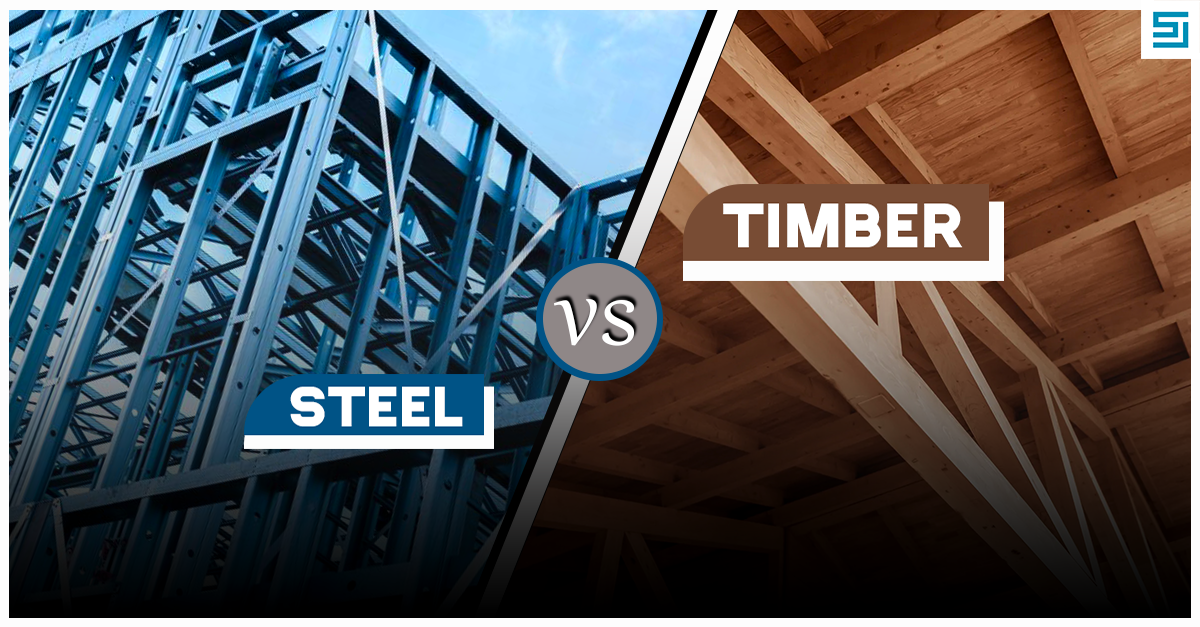
Selecting the right material is one of the most important choices in construction. Timber and steel are among the top contenders, each offering unique benefits and drawbacks. It’s essential to consider factors like durability, cost, environmental effects, and design versatility to make an informed decision. Let’s explore a thorough comparison to assist you in determining which material is the best fit for your building project.
Key Benefits of Timber in Construction
- Sustainability and Eco-Friendliness: Timber is often regarded as a sustainable building material due to its renewability. When harvested from well-managed forests, it typically has a lower carbon footprint compared to steel. Moreover, wood has the ability to store carbon, which can make it a carbon-negative resource in certain situations. However, if logging practices are not sustainable, it can result in deforestation, highlighting the importance of ethical sourcing.
- Cost-Effective and Easy to Work With: For home and smaller commercial projects, wood is a budget-friendly option. It’s easily accessible, simple to cut and mold, and doesn’t need as much specialized labor as steel. This leads to shorter construction times and decreased labor expenses.
- Natural Insulation Properties: Timber is a fantastic natural insulator, which can significantly lower energy expenses for both heating and cooling. This characteristic makes it perfect for areas with varying temperatures, ensuring a cozy indoor environment throughout the year.
Drawbacks of Timber in Construction
- Susceptibility to Pests and Decay: Termites and various pests can harm wood if it’s not consistently treated. Additionally, moisture can cause decay and lead to structural problems as time goes on.
- Shorter Lifespan: Timber structures typically don’t last as long as steel ones, especially when exposed to severe weather. To enhance their longevity, it’s important to carry out regular maintenance.
Key Benefits of Steel in Construction
- Superior Strength and Durability: Steel’s exceptional tensile strength makes it perfect for constructing large and towering structures like skyscrapers, bridges, and industrial facilities. Additionally, it is resistant to pests, decay, and fire, which means it needs very little maintenance throughout its lifespan.
- Design Flexibility and Larger Spans: Steel provides the opportunity for more open floor layouts and extended spans without relying on load-bearing walls. This versatility empowers architects to craft creative and spacious designs, especially in commercial and industrial settings.
- Prefabrication for Faster Builds: Prefabricating many steel components off-site can significantly accelerate the construction timeline and lower labor expenses on-site. This approach is especially advantageous for large projects where meeting deadlines is essential.
Drawbacks of Steel in Construction
- Higher Initial Costs: Steel provides long-term savings by minimizing maintenance needs, but the upfront costs are typically greater than those of timber because of the expense of materials and skilled labor.
- Corrosion Issues: Steel can easily rust, particularly in damp conditions. To avoid corrosion, it’s essential to apply protective coatings and perform regular maintenance, as this can help manage long-term expenses.
- Energy Efficiency Concerns: Steel does not provide good thermal insulation, so extra insulation measures are needed to achieve energy efficiency standards.
Also Read: Complete Guide to Insulation in New Zealand: Best Options, Costs, and Benefits
Environmental Considerations: Timber vs. Steel
- Timber: Timber is a renewable resource that tends to have a lower carbon footprint, particularly when it is obtained through sustainable practices. On the other hand, unsustainable logging can lead to significant environmental damage, making it essential to look for certifications such as FSC (Forest Stewardship Council) when sourcing wood.
- Steel: Steel can be recycled, but the process of making it requires a lot of energy and leads to high carbon emissions. Fortunately, new methods for producing green steel are emerging, which aim to lessen its environmental footprint. However, when it comes to being eco-friendly, steel still falls short compared to timber.
Which Material is Right for Your Project?
Choose Timber If:
- You want a natural, eco-friendly material.
- Your project is residential or small-scale commercial.
- Cost and insulation are priorities.
Choose Steel If:
- Your project requires large, open spaces or tall structures.
- Durability and long-term strength are critical.
- You want to minimize pest and fire risks.
Conclusion: Striking the Right Balance
The decision to use timber or steel really hinges on the unique requirements of your project, your budget, and any environmental factors you need to consider. Timber is often more affordable and eco-friendly, while steel boasts incredible strength and durability. By carefully evaluating these aspects, you can choose the option that best fits your project objectives.
